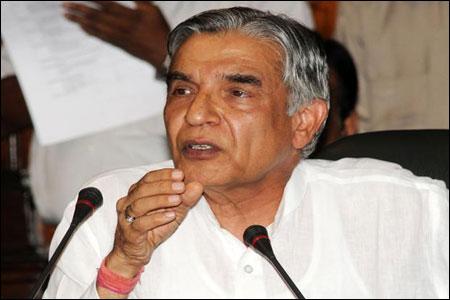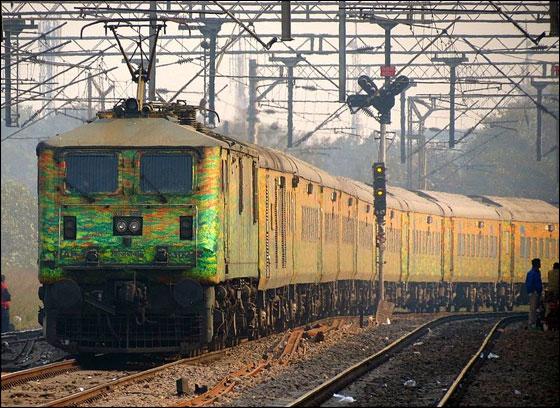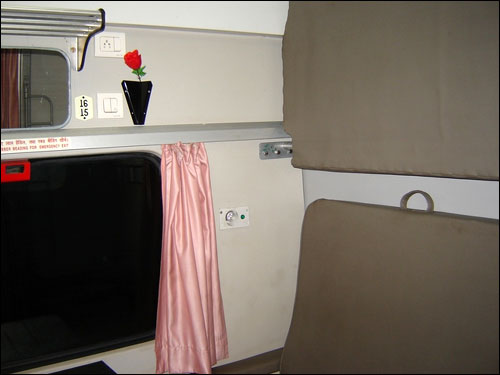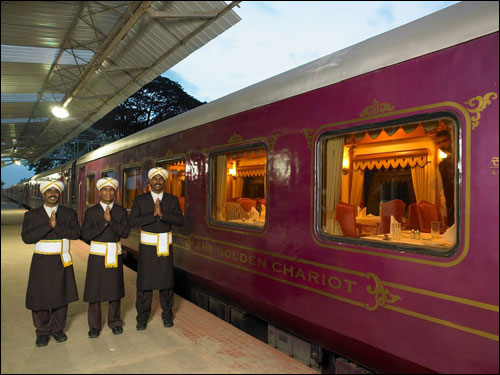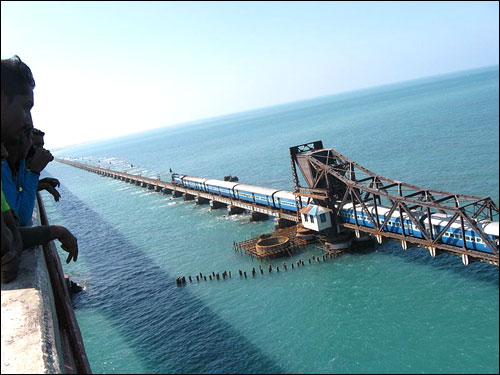 | « Back to article | Print this article |
How Indian Railways can be turned around
The new railway minister's biggest contribution would be to allow the technocrats in the Indian Railways to function freely, writes A K Bhattacharya.
The new railway minister, Pawan Kumar Bansal, is likely to be feted by most reformists for making what they would consider the right noises.
On the very first day after assuming charge at Rail Bhavan, Mr Bansal said passenger fares needed to be raised, without which the Indian Railways would be in financial trouble.
Mr Bansal is right. Railway passenger fares have in the last decade or so seen only marginal increases, limited largely to upper-class travel.
To partially compensate this loss, the railways have raised freight rates periodically - with two undesirable consequences.
One, the railways have lost large chunks of freight carriage business to goods carriers by road which have proved to be more efficient at lower costs, even though freight movement by rail is considered more energy-efficient and less polluting.
Two, railway freight rates have begun subsidising passenger fares, turning the economic principles of running an enterprise on their head. Mr Bansal's move to raise passenger fares, therefore, is aimed at correcting several distortions that had started crippling the Indian Railways.
Click on NEXT for more...
How Indian Railways can be turned around
Yet it would be premature to celebrate Mr Bansal's statement as an endorsement of genuine reforms. Note that Mr Bansal talks only about the need to raise passenger fares.
Nobody as yet knows what that statement means for the fate of the proposed rail tariff authority. Mr Bansal's predecessor, C P Joshi, used his short stint as railway minister to prepare a Cabinet note for setting up an authority that would be empowered to fix passenger fares and freight rates.
Mr Joshi had not finalised the precise modalities of how the fares and freight rates would be fixed or how autonomous would that authority be.
But that was indeed a reformist move which, if implemented, could have freed rail fares and freight rates from political meddling, allowing them instead to be fixed on the basis of objective economic realities.
Click on NEXT for more...
How Indian Railways can be turned around
If Mr Bansal, therefore, is keen on establishing himself as a reformist railway minister, he should not do what Jaipal Reddy did as petroleum and natural gas minister.
Mr Reddy not only took an inordinately long time in allowing petrol and diesel prices to be raised, but, worse, he did not let go of his control over petroleum product pricing.
True reform is not about retaining your discretionary control on prices or revising them as and when you deem that necessary, but about putting in place a mechanism through which prices can be fixed independent of any political pressure.
For both Veerappa Moily, the new petroleum and natural gas minister, and Mr Bansal, the test of their reformist credentials would be whether they let go of their controls on fixation of prices of petroleum products and railway passenger fares as well as freight rates.
Click on NEXT for more...
How Indian Railways can be turned around
The tasks for Mr Bansal, however, will not be over only with the setting up of a rail tariff authority.
He should draw inspiration from what two successfully running metro networks have achieved by depoliticising the exercise of fixing tariffs.
Both these metro networks - in Delhi and Bangalore - have used innovative methods to virtually eliminate political interference and influence over their fare fixation exercise.
It is time Mr Bansal did something similar for the Indian Railways. His railway budget will become less interesting as a result.
But that would be a small price to pay in return for the huge benefits the Indian Railways would reap as a result.
Click on NEXT for more...
How Indian Railways can be turned around
Indeed it will be an opportune moment for Mr Bansal to take the bold and much-awaited step now to disband the system of presenting a separate railway budget.
The total budget size of the Indian Railways is now smaller than those of quite a few public sector undertakings.
Even as a percentage of the Union government's total annual expenditure, the railway budget is relatively small - less than 10 per cent.
So why should the Indian Railways have a separate Budget? Instead, it could be made part of the general Budget.
This would allow the Indian Railways to plan its tariffs and new trains, routes and projects just like other large public sector undertakings or Air India do.
That would be hailed as a reformist move, and Mr Bansal will be remembered by posterity as the minister who took that bold step.
Click on NEXT for more...
How Indian Railways can be turned around
Going beyond tariffs and rail budgets, Mr Bansal also has to look closely at how the Indian Railways has been under-providing for its capital expenditure, renewal of old and worn-out assets and pensions for its retired employees.
This has been triggered by successive railway ministers' desire to present a decent performance in a given year, ignoring the damage such short-sighted financial practices would cause to the long-term health of the Indian Railways.
Through deft accounting jugglery, the provisions for depreciation and capital spend are reduced to show a surplus.
Lalu Prasad began this practice and it was continued by all his successors. Mr Bansal would do well to stop this practice forthwith.
Providing for replacement of old assets and earmarking adequate resources for capital expenditure would all be prudent moves and Mr Bansal should not hesitate to initiate them.
Click on NEXT for more...
How Indian Railways can be turned around
Finally, the new railway minister should avoid the mistake of bringing out yet another white paper on the Indian Railways, which will only delay action required to improve the railway system.
Instead, he should focus on the basic issues of giving the railways operational freedom to run efficiently and profitably.
The Indian Railways has a competent team of technocrats at its helm, and his biggest contribution would be to allow it to function freely without any political interference.
A tariff authority, prudent financial practices and doing away with the practice of railway budgets would help him achieve that goal.
